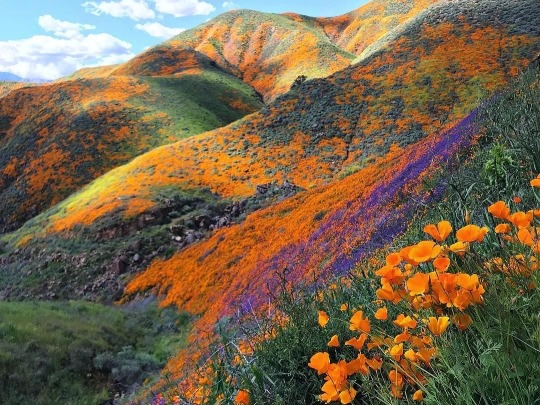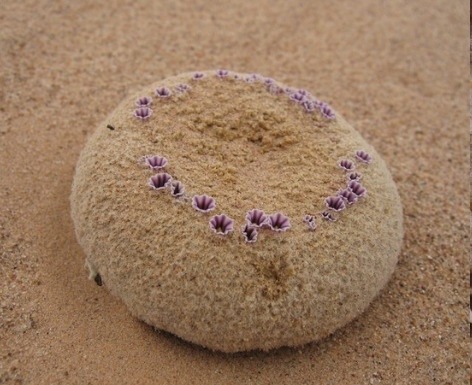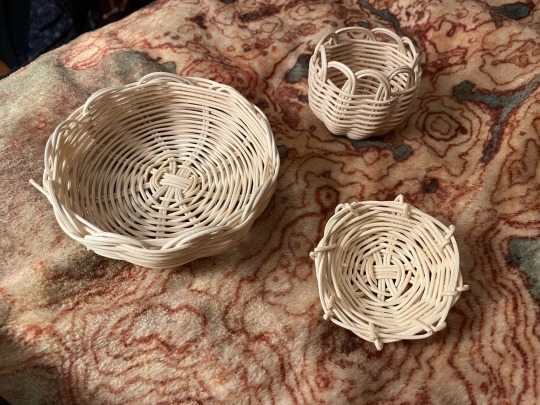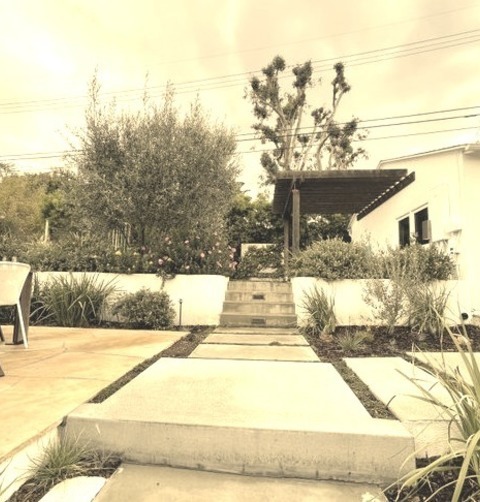#CA Native Plant
Explore tagged Tumblr posts
Photo
more

California Soap Root (Chlorogalum pomeridianum) [OC]
#4th#opens late afternoon for only one night#Chlorogalum pomeridianum#CA native plant#flowering is stimulated by fire but not necessary#bulbs cooked can be eaten#yes soap#rough brushes#traditional medicine#symbol to add
5 notes
·
View notes
Text
Help me decide?
I'm having a botanical/art crisis. This may be my last year ever in CA as we are likely getting PCSed(Permanent Change of Station) soon. To honor the state where I spent most of my life, I want to do a series of southern California plant illustrations. I'm torn however. I originally wanted to do native CA plants, but after photographing, cataloguing, and researching many of the plants I had selected during my time hiking around socal, I've found many of them are not actually native. This begs the question. Should I do justice to the reality of what I've seen and enjoyed during my time living here by including non native plants and still calling them CA plants, or do I offer an idealized version of native CA plants even if it's not what the reality is when you are in the wild.
#botany#art#discussion#send halp#tbh my biggest concern is the botany buffs out there getting upset with me for calling invasive/non native species CA plants
84 notes
·
View notes
Text

The Coyote mint I planted this spring is starting to bloom! Hopefully it can survive the 100+ temps over the next couple days.
2 notes
·
View notes
Text

Native Sierra Tiger Lily
9 notes
·
View notes
Text


California ily


#spotify#california#tom petty#wildflowers#californication#california native plants#poppies#poppy flower#native plants#flowers#bloom#spring#summer#ca#orange and purple#coast#west coast
2 notes
·
View notes
Text

Pholisma Sonorae | CA Native Plants
8 notes
·
View notes
Text



More developing berries on the Snowberry bushes.
#common snowberry#ca native plants#I hope the drop in temps doesn't stop rhe berries from happening#the plants seem really happy
2 notes
·
View notes
Text
OKAY IT WENT REALLY WELL my ppt was weak BUT the experiential portion (making baskets) went GREAT to the point of the prof extending the break so people could finish them before the lecture started so i think i won 👍

look at my basket progression bottom right was my janky first attempt yesterday then the round orb was in class and i just finished the flat one watchin a movie :D
8 notes
·
View notes
Text

The lemonade berry !!!!!
Rhus integrifolia
The berries taste yummy and sour it’s great
everyone tell me your favorite animal and/or plant that lives where you live that isn't found other places
2K notes
·
View notes
Text
Polypodium spp. Polypod fern
Polypodium spp., Polypod fern
Polypodiaceae


KEY
terrestrial plant with no flowers or bulbs sporangia present
Herbs reproducing by spores released directly from sporangia, the sporangia variously located [on abaxial leaf face, [LYCOPHYTES and FERNS]
veins free-fused
leaf blade deltate-ovate, sori generally ± sunken, round to generally ovate
DESCRIPTION
California native perennial fern grows in shaded places, cliff bluffs,rocks, not on plants, usually granite or volcanic. Summer deciduous
Rhizome: long-creeping, lanceolate brown scales,
Petiole/Stipe
Blade: deltate to ovate, midrib adaxially hairy, segments serrate, tips obtuse to acute, veins generally 10--50% fused.
Sori: exindusiate, sunken, round to generally ovate, somtimes has glandular hairs, yellow spores
family dgined by sori exindusiate
Funfact: The genus is mainly epiphytic , meaning grows on rocks and trees of the ground. Poly pod means many foot describe the knobby foot/base they usually have obvioius in species like staghorn ferns. The genus polypod is also distinguished by having exindusiate sori
SOURCES AND MORE INFORMATION
Plant Systemiatc, Michael G
Jepson eFlora Polpodium californica
#ca native#california native plants#scv native#placerita#fern#polpypodium californica#polypodium#polypod fern#polypod
0 notes
Text
My California Native Garden 2024
This year, my garden has been blessed with copious rainfall, resulting in a thriving and vibrant landscape. The diverse array of wildlife that now calls my garden home includes frogs, lizards, squirrels, a wide variety of birds, bees, moths, butterflies, and other insects. I am facing a gardening challenge due to the presence of a gopher that is causing damage to my plants and creating holes…
#arroyo lupine#backyard#beach strawberry#bees#birds#CA native plants#California morning glory#california poppy#California sagebrush#California sunflower#California wild rose#clarika#drought tolerant plants#flower#flowers#front yard#garden#insect#leaves#narrow leaf milkweed#nature#plant#plants#red rose#seaside daisy#wallace’s nightshade#water wise garden#wildlife#yarrow
0 notes
Photo

Natural Stone Pavers - Contemporary Landscape Photo of a sizable, modern stone garden path in the front yard that receives some sunlight in the spring.
#front yard#contemporary landscape#ca native plants#stucco retaining wall#outdoor furniture#manzanita#low water plants
0 notes
Text
Pathway Landscape in Los Angeles

Inspiration for a mid-sized mediterranean drought-tolerant and full sun side yard stone garden path in spring.
0 notes
Text
My Grape Soda Lupine (Lupinus excubitus) has it's first few petal peeking out, can't wait for the other stalks to bloom too

2 notes
·
View notes
Text
Concrete Pavers Front Yard

Inspiration for a mid-sized mid-century modern partial sun front yard concrete paver landscaping.
#raised vegetable garden#meadow lawn#ca native plants#mid century landscape#karl benjamin#modern wood deck#drought tolerant
0 notes
Text
"The Yurok will be the first Tribal nation to co-manage land with the National Park Service under a historic memorandum of understanding signed on Tuesday [March 19, 2024] by the tribe, Redwood national and state parks, and the non-profit Save the Redwoods League, according to news reports.
The Yurok tribe has seen a wave of successes in recent years, successfully campaigning for the removal of a series of dams on the Klamath River, where salmon once ran up to their territory, and with the signing of a new memorandum of understanding, the Yurok are set to reclaim more of what was theirs.
Save the Redwoods League bought a property containing these remarkable trees in 2013, and began working with the tribe to restore it, planting 50,000 native plants in the process. The location was within lands the Yurok once owned but were taken during the Gold Rush period.
Centuries passed, and by the time it was purchased it had been used as a lumber operation for 50 years, and the nearby Prairie Creek where the Yurok once harvested salmon had been buried.
Currently located on the fringe of Redwoods National and State Parks which receive over 1 million visitors every year and is a UNESCO Natural Heritage Site, the property has been renamed ‘O Rew, a Yurok word for the area.
“Today we acknowledge and celebrate the opportunity to return Indigenous guardianship to ‘O Rew and reimagine how millions of visitors from around the world experience the redwoods,” said Sam Hodder, president and CEO of Save the Redwoods League.
Having restored Prarie Creek and filled it with chinook and coho salmon, red-legged frogs, northwestern salamanders, waterfowl, and other species, the tribe has said they will build a traditional village site to showcase their culture, including redwood-plank huts, a sweat house, and a museum to contain many of the tribal artifacts they’ve recovered from museum collections.
Believing the giant trees sacred, they only use fallen trees to build their lodges.
“As the original stewards of this land, we look forward to working together with the Redwood national and state parks to manage it,” said Rosie Clayburn, the tribe’s cultural resources director.
It will add an additional mile of trails to the park system, and connect them with popular redwood groves as well as new interactive exhibits.
“This is a first-of-its-kind arrangement, where Tribal land is co-stewarded with a national park as its gateway to millions of visitors. This action will deepen the relationship between Tribes and the National Park Service,” said Redwoods National Park Superintendent Steve Mietz, adding that it would “heal the land while healing the relationships among all the people who inhabit this magnificent forest.”"
-via Good News Network, March 25, 2024
#indigenous#land back#indigenous issues#first nations#native american#indigenous peoples#yurok#yurok tribe#national parks service#national park#redwoods#california#trees#trees and forests#united states#good news#hope#indigenous land
5K notes
·
View notes